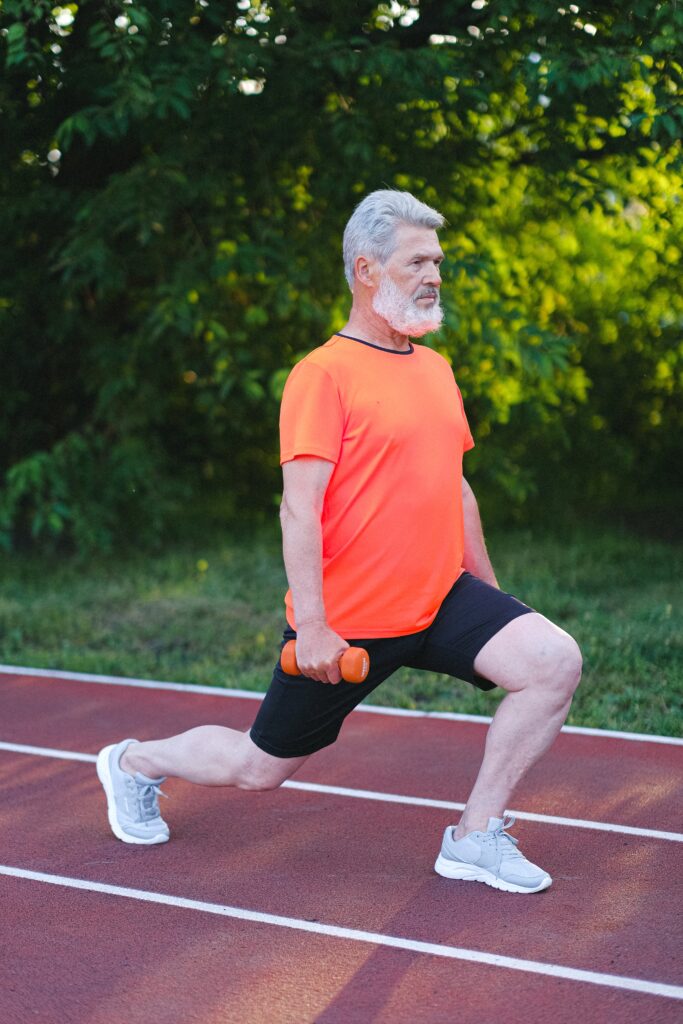A dynamic warm-up is a set of controlled, rapid movements that can help make your workout safer and more effective

Research suggests that dynamic warm-ups improve:
- Agility
- Speed
- overall performance (tennis, baseball, running, etc.)
- Reduce risk of injury by about 30 percent in a 2017 research review.
Dynamic warm-ups involve a series of exercises, at least some of which are dynamic stretches that take joints through their full range of motion.
Why do dynamic movements:
- To increase your body temperature
- To gently stress your soft tissues. activates intracellular sensors called muscle spindles, which then amplify electrical currents that help your mind and muscles communicate and make your muscles more responsive.
- Over time it improved agility and coordination can also reduce your risk of injury.
Based on the research, he suggested six to eight exercises, each performed for about 15 to 30 seconds, two to three times. Start relatively easy and increase your effort and intensity. (Dr. López Samanes)
Here are some exercises you can do:
- Straight leg walks
→ THE BENEFITS:
- Core strength
- Hip Flexibility
- Balance and Coordination
- Posture Enhancement
- Low-Impact Exercise
- Forward lunges
→ THE BENEFITS
- Leg Strength
- Hip Flexibility
- Balance and Coordination
- Core Activation
- Calorie Burning
- Lower Back Support
- Muscle Symmetry

- Hip Cradles
→ THE BENEFITS
- Hip Mobility
- Hip Flexibility
- Core Strength
- Balance and Coordination
- Lower Back support
- Mental Focus
- Side slits
→ THE BENEFITS
- Leg Strength
- Hip Mobility
- Balance and Coordination
- Core Activation
- Calorie Burn
- Hip Adductor and Abductor Strengthening
- Muscle Symmetry
- Lateral mix with overhead reach
→ THE BENEFITS
- Total Body Engagement
- Cardiovascular Fitness
- Leg Strength
- Hip Mobility
- Core Activation
- Upper Body Strength
- Balance and Coordination
- Postural Benefits
- Thoracic spine rotations
→ THE BENEFITS
- Thoracic Mobility
- Posture Enhancement
- Pain Relief
- Better Breathing
- Reduced Risk of Injury
- Enhanced Athletic Performance
- Stress Reduction
- Improved Digestion
EUROPEAN PERSPECTIVE
Why Workout ?
- Strength training: exercises to make muscles stronger, more enduring, and toned.
- Involves lifting weights, using body weight resistance, or gym machines.
- Benefits:
- Increased muscle strength and power.
- Improved posture and balance, reducing injury risks.
- Muscle mass gain, aiding in calorie burning and body composition improvement.
- Enhances overall health, boosts immune system, reduces chronic disease risks, and improves mental health.
- Suitable for all ages, fitness levels, and goals.
- Key principles: progressive overload and recovery.
- Progressive overload: gradually increase weight, reps, sets, or reduce rest time.
- Recovery: muscles repair and strengthen during rest periods.
- Safety tips:
- Warm-up before training, use appropriate weights, maintain proper form, rest adequately, stay hydrated.
- Exercises:
- Squats, lunges, push-ups, dips, rows, crunches, planks, lateral plank, leg press, deadlifts, bench press, lateral raises, bicep curls, tricep extensions, good mornings.
- Variety essential to target all muscle groups, prevent imbalances.
- Seek guidance from a coach to avoid injuries.
- Strength training benefits: improves strength, posture, balance, and body aesthetics.
- Start with simple exercises, progressively challenge yourself, and enjoy the process.
source: The Best Warm-Up Is A Dynamic Warm-UP – The New York Times & https://www.fitness.fr/le-renforcement-musculaire-quest-ce-que-cest-et-pourquoi-en-faire/



